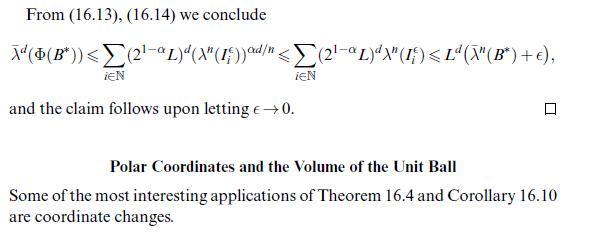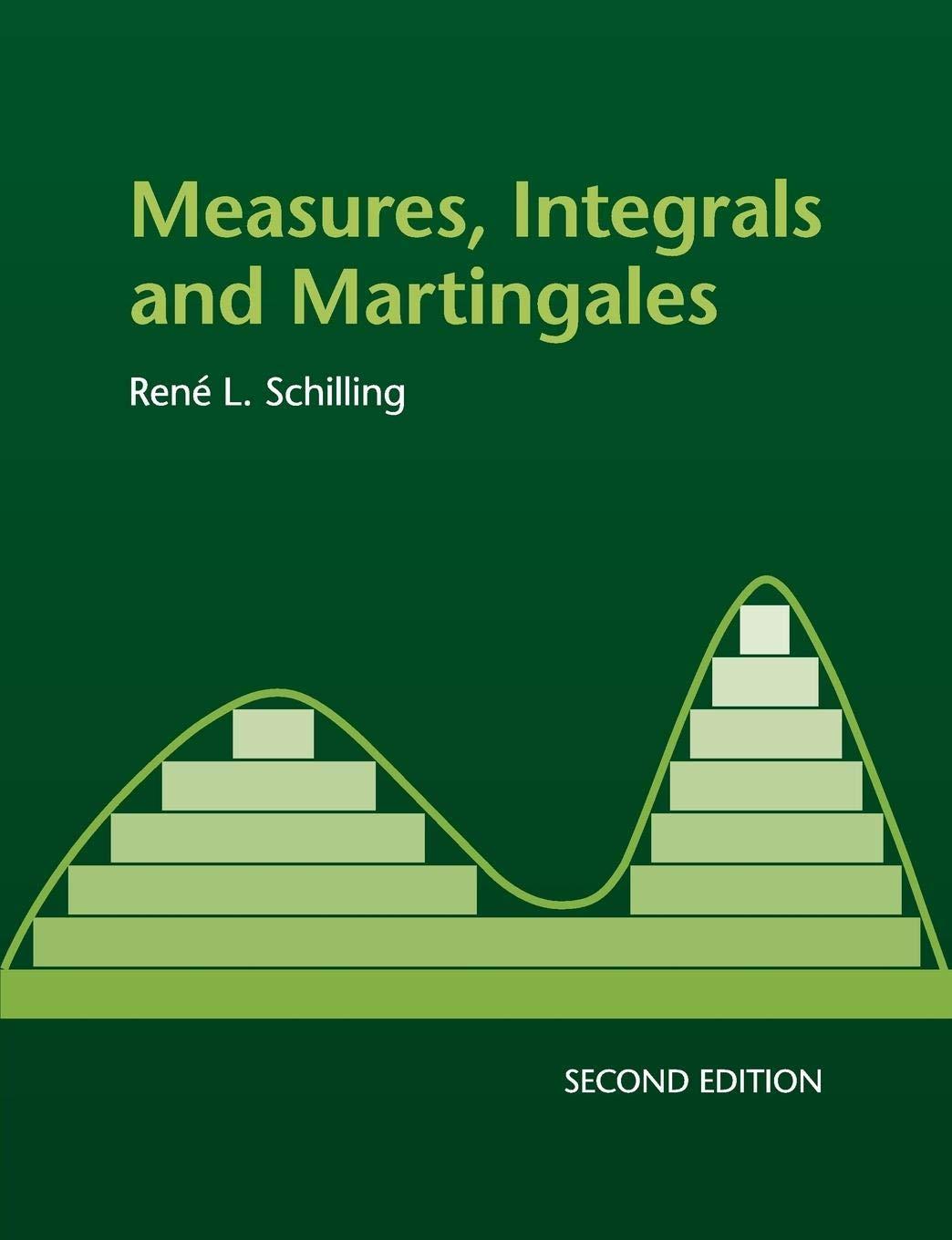Let (C) be Cantor's ternary set, see page 4 and Problem 7.12. (i) Show that (C-C:={x-y: x,
Question:
Let \(C\) be Cantor's ternary set, see page 4 and Problem 7.12.
(i) Show that \(C-C:=\{x-y: x, y \in C\}\) is the interval \([-1,1]\).
(ii) Show that this proves that the result of Corollary 16.14 is the best possible.
[ (i) Use the ternary expansion of \(x \in C\) from Problem 7.12 and show that \(\frac{1}{2}(C-C+1)=[0,1]\). (ii) Consider the map \(\mathbb{R}^{2} i(x, y) \mapsto \alpha(x, y):=x+y \in \mathbb{R}\). \(]\)
Data from corollary 16.14
![Corollary 16.14 Let :R" a (0,1]. If ad>n, then B(Rd), and the inequality Rd be an a-Hlder continuous map](https://dsd5zvtm8ll6.cloudfront.net/images/question_images/1705/7/5/3/91565abbd3bd30e61705753913560.jpg)


Data from problem 7.12
7.12. Cantor's ternary set. Let \((X, \mathscr{A})=([0,1],[0,1] \cap \mathscr{B}(\mathbb{R})), \lambda=\left.\lambda^{1}ight|_{[0,1]}\), and set \(C_{0}=[0,1]\). Remove the open middle third of \(C_{0}\) to get \(C_{1}=J_{1}^{0} \cup J_{1}^{1}\). Remove the open middle thirds of \(J_{1}^{i}, i=0,1\), to get \(C_{2}=J_{2}^{00} \cup J_{2}^{01} \cup J_{2}^{10} \cup I_{2}^{11}\) and so forth.
(i) Make a sketch of \(C_{0}, C_{1}, C_{2}, C_{3}\)
(ii) Prove that each \(C_{n}\) is compact. Conclude that \(C:=\bigcap_{n \in \mathbb{N}_{0}} C_{n}\) is non-void and compact.
(iii) The set \(C\) is known as the Cantor set or Cantor's discontinuum. It satisfies \(C \cap\) \(\bigcup_{n \in \mathbb{N}} \bigcup_{k \in \mathbb{N}_{0}}\left(\frac{3 k+1}{3^{n}}, \frac{3 k+2}{3^{n}}ight)=\emptyset\)
(iv) Find the value of \(\lambda\left(C_{n}ight)\) and show that \(\lambda(C)=0\).
(v) Show that \(C\) does not contain any open interval. Conclude that the interior (of the closure) of \(C\) is empty.
Remark. Sets with empty interior are called nowhere dense.
(vi) We can write \(x \in[0,1)\) as a base-3 ternary fraction, i.e. \(x=0 . x_{1} x_{2} x_{3} \ldots\), where \(x_{i} \in\) \(\{0,1,2\}\), which is short for \(x=\sum_{i=1}^{\infty} x_{i} 3^{-i}\). (For example, \(\frac{1}{3}=0.1=0.02222 \ldots\); note that this representation is not unique, \(\left[Z_{0}ight]\) which is important for this exercise.) Show that \(x \in C\) if, and only if, \(x\) has a ternary representation involving only \(0 \mathrm{~s}\) and \(2 \mathrm{~s}\).
[ the numbers in \(\left(\frac{1}{3}, \frac{2}{3}ight)\), the first interval to be removed, are all of the form \(0.1 * * * \ldots\), i.e. they contain at least one ' 1 ', while in \(\left[0, \frac{1}{3}ight]\) and \(\left[\frac{2}{3}, 1ight]\) we have numbers of the form \(0.0 * * * \ldots-0.022222 \ldots\) and \(0.2 * * * \ldots-0.2222 \ldots\), respectively. The next step eliminates the \(0.01 * * * \ldots\) s and \(0.21 * * * \ldots\) s - etc.]
(vii) Use (vi) to show that \(C\) is not countable and even has the same cardinality as \([0,1]\). Nevertheless, \(\lambda(C)=0 eq 1=\lambda[0,1]\).
Step by Step Answer:






